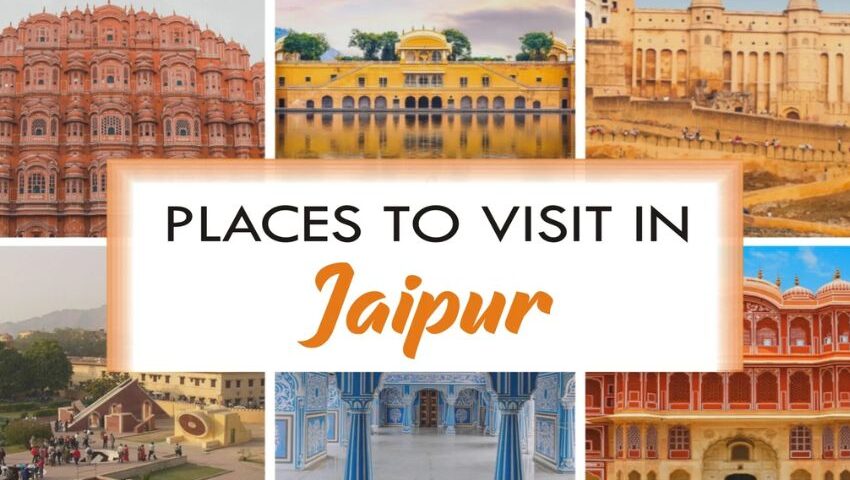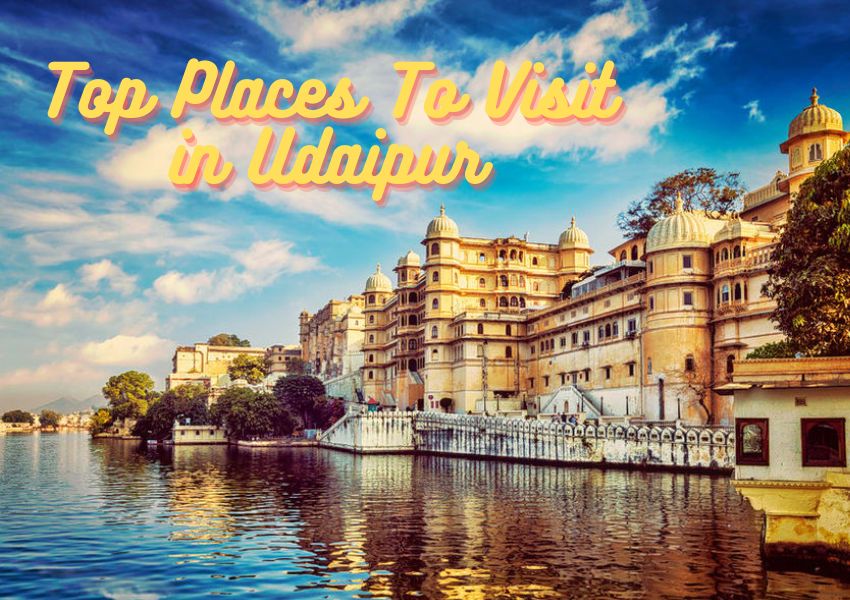- We Are Pure B2B & Inbound Travel Company
Places To Visit in Jaipur

7 Best Places to Visit in India with Kids
February 7, 2024
Places To Visit in Udaipur
March 22, 2024Jaipur is nicknamed the “Pink City” and is famous for its beauty, historic architecture, and royal heritage. It offers a glimpse into Rajasthan’s rich culture and history through its inviting palaces, camel and elephant rides, vibrant Rajasthani culture, and tasty cuisine. This city transports visitors to a bygone era, showcasing the grand lifestyle of the Maharajas.
Jaipur’s allure attracts tourists from across the globe with its stunning architecture, vibrant atmosphere, and glittering charm. It serves as a window into Rajasthan’s culture, lifestyle, and folklore. Often referred to as the Golden Triangle Tour of Indian tourism along with Delhi and Agra, Jaipur sees a significant influx of foreign visitors.
Nestled amidst the Aravali Mountains, Jaipur boasts a picturesque landscape with colorful hills and serene lakes. Its skyline is adorned with magnificent forts like Amber Palace, Nahargarh, and Jaigad Fort. The old “Walled City” is renowned for its narrow streets, pink-hued buildings, and iconic landmarks such as Hawa Mahal, City Palace, and Jantar Mantar. These streets are popular among tourists for their delectable sweets, snacks, and shopping experiences. Here are some top 10 places to visit in Jaipur.
Tourist Places to Visit in Jaipur
Here are the top 10 attractions in Jaipur that draw tourists from all corners of the world. Additionally, you can find the best travel agency in India for Jaipur sightseeing.
1. Birla Temple
The Birla Temple in Jaipur is renowned as one of India’s famous temples. Built by the Birla Group of Companies in 1988, it stands out for its white marble construction. Inside, there’s a splendid statue of Laxmi Narayan, crafted from a single piece of stone. The temple’s exterior is equally captivating, with marble stairs and a beautiful garden featuring an attractive idol of Lord Shankar. For those interested in exploring Jaipur. Check out the link provided for the Jaipur city tour package.
- Best Time to Visit – September to March
- Operational Hours – 6 AM to 12 PM, and again from 3 PM to 9 PM
- Entry Fee – Free of cost
- Things to Do – Exploring Indian culture, spiritual offerings and prayers
- How to Reach – Via air, rail and road
2. Hawa Mahal (Palace of Winds)
Hawa Mahal stands out as one of Jaipur’s top tourist spots. This remarkable structure, crafted from red and pink sandstone, was built by Maharaja Sawai Pratap Singh in 1799. Its name, meaning “Palace of Winds,” reflects its unique design, featuring numerous small windows that allow cool breezes to enter, keeping the palace pleasantly cool during summer. The palace was ingeniously designed to allow the women of the royal family to observe city life and processions without being seen, offering them a secluded yet panoramic view from within.
With five stories, each floor of Hawa Mahal is intricately adorned. A captivating fountain greets visitors upon entry, leading to various floors. From the top floor, visitors can enjoy stunning views of City Palace, Jantar Mantar, and Sirh Deori Bazaar. Additionally, there’s a small museum displaying ancient artifacts related to Rajput lifestyle.
- Best Time to Visit – September to February
- Operational Hours – 9:30 AM to 4:30 PM
- Entry Fee – ₹ 50 for foreigners, ₹ 20 for Indians
- Things to Do – Exploring history, watching royal elegance and grand architecture, enjoying the city view
- How to Reach – Via air, rail and road
3. City Palace
The City Palace comprises a significant ensemble of courtyards, gardens, and edifices situated within the old “Walled City” of Jaipur. It served as the residence of the Maharaja of Jaipur, who headed the Kachchwa Rajput Dynasty. Among Jaipur’s most renowned tourist attractions and key landmarks, the City Palace was constructed by Sawai Jai Singh between 1729 and 1732 AD.
Today, while part of the palace functions as Jaipur’s Raj Bhavan, a portion has been transformed into a museum. The splendid architecture of the City Palace reflects a unique blend of Mughal and Rajput styles. The palace complex includes notable structures such as Chandra Mahal, Mubarak Mahal, Queen’s Palace, Shri Govind Dev Temple, Diwan-i-Khas, Diwan-i-Aam, Pritam Niwas Chowk, and the City Palace Museum.
- Best Time to Visit – September to March
- Operational Hours – 9:30 AM to 5 PM, and again from 7 PM to 10 PM
- Entry Fee – ₹ 300 for Indian adults, ₹ 200 for Indian children (5 to 12 years), ₹ 700 for foreign adults, ₹ 400 for foreign children (5 to 12 years)
- Things to Do – Watching astonishing collections of costumes from royal times, Rajput weapons, etc.
- How to Reach – By air, rail and road
4. Jantar Mantar
Jantar Mantar is a top tourist spot in Jaipur City, known as the largest of India’s five astronomical observatories. King Sawai Jai Singh constructed it between 1727 and 1733. Its name comes from the Sanskrit term meaning “means of calculation.” In 2010, it was designated as a UNESCO World Heritage Site. The observatory features nineteen stone and bronze instruments arranged cleverly, enabling observers to calculate the positions of celestial bodies with the naked eye.
- Best Time to Visit – October to March
- Operational Hours – 9 AM to 5 PM
- Entry Fee – ₹ 200 for foreigners, ₹ 100 for international students, ₹ 50 for Indians, ₹ 15 for Indian students
- Things to Do – Exploring history, watching the world’s largest sundial made with stone, etc.
- How to Reach – Via air, rail and road
5. Nahargarh Fort
The Nahargarh fort is one of the many countless palaces of Jaipur and beautiful historic buildings that tell the magnificent and rich history of this city. Built-in 1734 and expanded in 1868, this strong fort is visible to the whole city. Made of delicate carving and stone artwork, this fort is an impenetrable fort, which together with the two neighboring forts, Aamer Fort and Jaigad Fort, used to protect the city of Jaipur at some point of time. It was originally called the Sudarshangarh fort, but later it was changed to Nahargarh fort, which literally means “residence of Tigers”.
There are many well-preserved structures inside the fort. The most beautiful is the Madhavendra Bhawan, which is a magnificent hall with complex murals and plasterwork. The Nahargarh fort was mainly used for the ladies of the royal house; hence there is also the Janaana palace. The ‘Mardana Mahal’ of the male members of the royal family was also constructed here.
- Best Time to Visit – Winter season
- Operational Hours – 10 AM to 5:30 PM
- Entry Fee – ₹ 50 for Indians and ₹ 200 for foreigners
- Things to Do – Exploring culture and heritage, visiting nearby places
- How to Reach – Via air, rail and road
6. Amber Fort (Amer Fort)
Situated around 11 km from Jaipur city center, Amber Fort stands as a testament to the grandeur of Rajput architecture. Visitors can explore its majestic palaces, intricate carvings, and stunning views of the surrounding hills.
- Best Time to Visit – Winter months, October to February
- Operational Hours – 9 AM to 6 PM
- Entry Fee – ₹ 200 for foreigners, ₹ 25 for Indians, ₹ 10 for students
- Things to Do – Exploring culture and history, photography
- How to Reach – Via air, rail and road
7. Jaigarh Fort
Perched on the Aravalli hills, Jaigarh Fort offers breathtaking panoramic views of Jaipur. This fort is famous for its massive cannon, Jaivana, which is believed to be the world’s largest cannon on wheels.
- Best Time to Visit – November to February
- Operational Hours – 9 AM to 4:30 PM
- Entry Fee – ₹ 80 for foreigners, ₹ 35 for Indians
- Things to Do – Sightseeing, visiting Jaivana Cannon, visiting temples
- How to Reach – Via air, rail and road
8. Albert Hall Museum
Built-in the late 19th century, the Albert Hall Museum is a splendid example of Indo-Saracenic architecture. It houses an extensive collection of artifacts including paintings, sculptures, carpets, and metal objects, offering a glimpse into Rajasthan’s rich cultural heritage.
- Best Time to Visit – October to March
- Operational Hours – 9 AM to 5 PM, and again from 7 PM to 10 PM
- Entry Fee – ₹ 100 for Indians, ₹ 100 for foreigners
- Things to Do – Watching historical elements, exploring royal elegance, watching aviary, zoo etc.
- How to Reach – Via air, rail and road
9. Jal Mahal (Water Palace)
Nestled amidst the tranquil waters of Man Sagar Lake, Jal Mahal is an architectural marvel. While visitors cannot enter the palace, its picturesque setting makes it a favorite spot for photography enthusiasts.
- Best Time to Visit – October to March
- Operational Hours – 6 AM to 6:30 PM
- Entry Fee – ₹ 10 for Indians, ₹ 50 for foreigners
- Things to Do – Watching scenic beauty, boat riding, exploring ancient royal essence
- How to Reach – Via air, rail and road
10. Galtaji Temple
Also known as the Monkey Temple, Galtaji is a complex of temples and pavilions set amidst natural beauty. Visitors can observe monkeys roaming freely in the area and take a dip in the sacred water tanks believed to have healing properties.
- Best Time to Visit – October to December
- Operational Hours – 5 AM to 9 PM
- Entry Fee – Free of cost
- Things to Do – Enjoy natural beauty, spiritual activities, etc.
- How to Reach – Via air, rail and road
11. Jaipur Markets
No visit to Jaipur is complete without exploring its bustling markets. From vibrant bazaars like Johari Bazaar and Bapu Bazaar offering traditional Rajasthani attire and jewelry to modern shopping complexes like MI Road and World Trade Park, Jaipur markets cater to every shopper’s delight.


